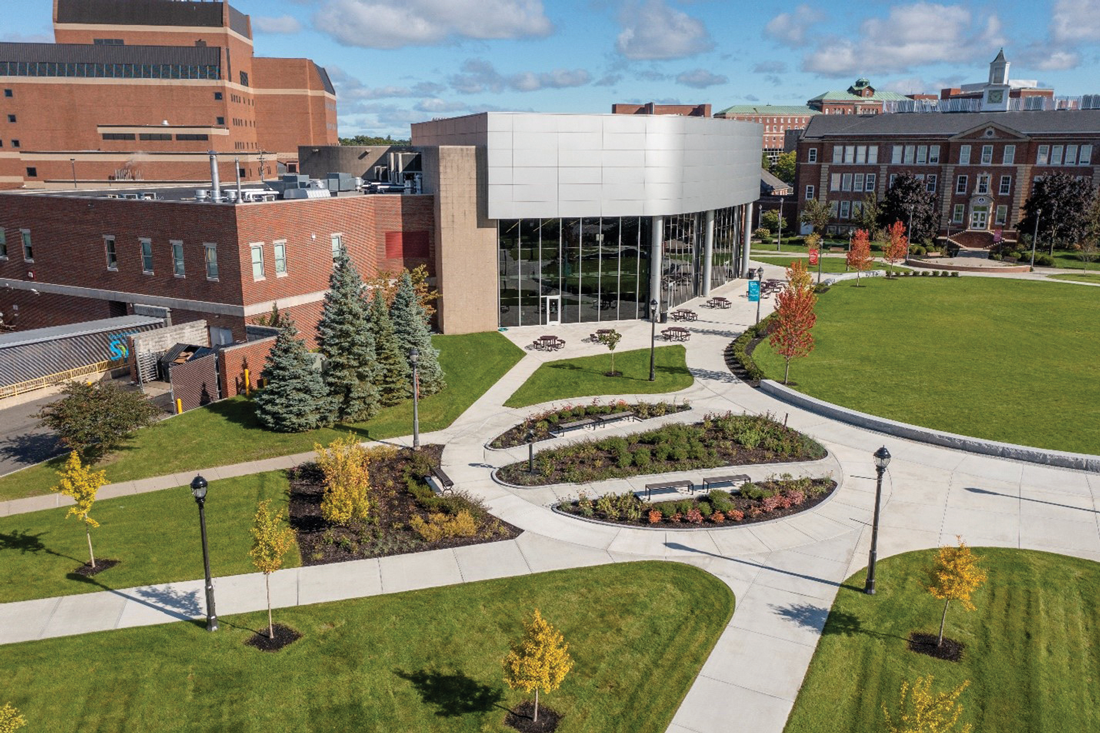
By Christine GraF
As the LA Group prepares to celebrate its 50th anniversary later this year, the company continues to expand its footprint throughout the United States. Established in 1974, the Saratoga Springs-based landscape architecture and civil engineering firm has a staff of 39 employees and small offices in Ithaca and Pittsburgh.
“We started out as a local shop in Saratoga but have really bolstered our experience nationally,” said Chelsea LaMarco, marketing manager. “We do a lot of federal work with the government—specifically with the Department of Veterans Affairs.”
As part of that work, the LA Group was enlisted as the site designer and landscape architect for a major expansion of the historic Arlington National Cemetery, one that transformed a difficult steeply-sloping and wooded 30-acre parcel into a shrine to honor those who have served our country.
The firm was also chosen as the prime consultant and designer for Western New York National Cemetery, tasked with designing a new national cemetery in Pembroke, about 15 miles east of Buffalo. The project involved master planning, project management, construction administration, and coordination of a large sub-consultant team.
In addition to performing work at government-owned cemeteries, the LA Group partners with municipalities and organizations to revitalize or expand community and historic cemeteries. For example, when working with the Riverside Cemetery in Rochester, the firm incorporated a “green burial” section into the property, one that was designed to reduce the cemetery’s environmental impact.
“We also do a lot of work for the National Park Service and a few other large government agencies,” LaMarco said, citing the Niagara Falls State Park Transformational Initiative as one of the LA Group’s park services projects.
As part of that project, the LA Group provided landscape architectural services for the design of a $65 million facility upgrade at Niagara Falls State Park. Upon completion, the firm received seven design awards from various architecture, engineering, and construction industry organizations.
The LA Group also performed work for the parks department at the Olana State Historic Site in Hudson, providing detailed site design and environmental permitting for improvements made at the historic home of famed Hudson River School painter Frederic Church.
“Locally, we also work a lot with the park service on trail rehabs and other work in the parks,” said LaMarco. “We also work quite a bit with local developers on just about any project you can think of.”
For a project that is currently underway with Bonacio Construction, the LA Group was selected to provide site design, landscape architecture, engineering, and municipal and environmental permitting service for the Brookmere Resort. The resort is currently under construction on the former Longfellows site in Saratoga.
“We’ve also been working on a project at the Adelphi hotel,” LaMarco said. “We are assisting the team for the Rip Van Dam portion of work – handling site planning, land use approvals, site/civil engineering, and liaison assistance with various city departments. Essentially, we became an integral part of the design team to guide a very complex project through the process, all while the hotel remained open.”
Within the local educational realm, the LA Group collaborated on an initiative to create the Campus Green, an outdoor gathering hub for students at Albany College of Pharmacy and Health Sciences. The project garnered both local and national recognition, winning a Merit Award from the New York Upstate Chapter of the American Society of Landscape Architects. It was also featured on the cover of a national publication, Landscape Architect and Specifier News.
One of the LA Group’s longest running relationships has been with New York’s Olympic Regional Development Authority (ORDA). For more than four decades, the firm has partnered with ORDA on numerous projects including a recent $100 million renovation of the Lake Placid Olympic Center. The scope of that project included the replacement of the outdoor Olympic speed skating oval and timing building, a new pedestrian gateway plaza overlooking the oval, extensive architectural improvements to the Olympic Center, a new arrival courtyard and a new pedestrian plaza at the 1932 Olympic Arena.
